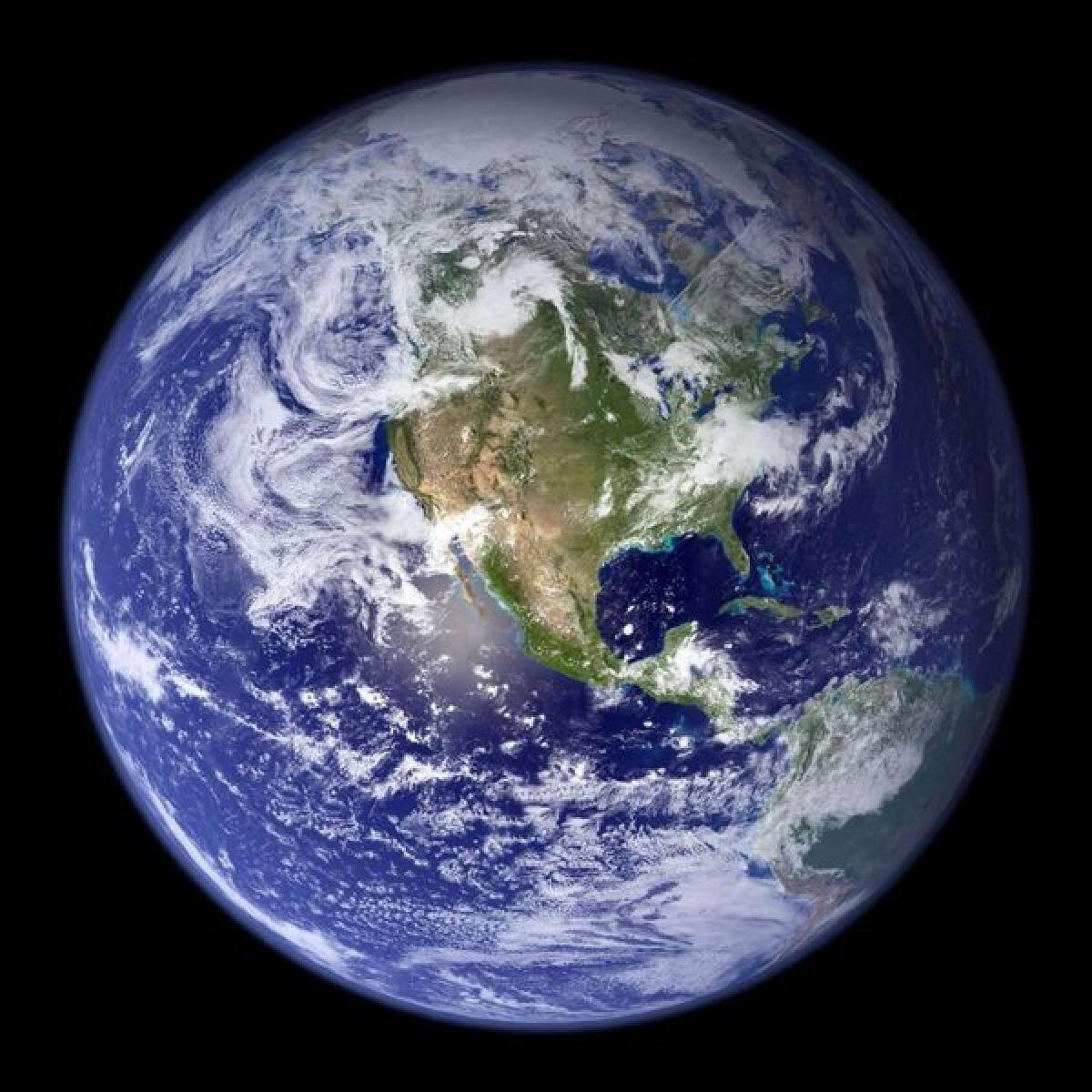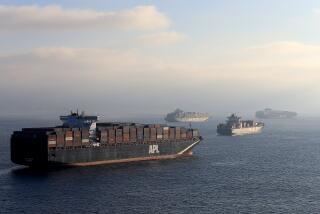Satellites and space debris disrupted by climate change

- Share via
Climate change from greenhouse gas emissions might threaten spacecraft as well as people, a scientists suggested on Sunday, providing direct evidence that carbon dioxide from human activity is affecting the outermost portion of the Earth’s atmosphere.
In a study published in the journal Nature Geoscience, a research team led by John Emmert of the U.S. Naval Research Laboratory’s Space Science Division in Washington, described a new method for quantifying increases in carbon dioxide in the hard-to-measure portion of the upper atmosphere known as the thermosphere, which can’t be reached by balloons and aircraft.
In that region, more than 50 miles above Earth’s surface, carbon emissions cause cooling rather than warming because carbon dioxide molecules collide with oxygen atoms and release heat into space. Because such cooling makes the planet’s atmosphere contract, it can reduce drag on satellites and debris that orbit the earth, possibly having “adverse consequences for the orbital debris environment that is already unstable,” the researchers wrote.
Tracking space debris is a major preoccupation for the aerospace industry. Earlier this year, the Los Angeles Times reported on the issue, noting that a 2011 NASA study determined that there were more than 22,000 pieces of space debris larger than 4 inches orbiting the Earth -- and that even tiny pieces of junk can inflict major harm on a spacecraft.
“Even tiny bits of debris, such as paint chips, can damage satellites and manned spacecraft when they’re traveling in low-Earth orbit at about 21,600 mph. An aluminum sphere half an inch in diameter has the potential to do as much damage upon collision as a 400-pound safe traveling at 60 mph. Larger items such as defunct satellites can pulverize the objects they hit in space, generating ever more pieces of dangerous floating trash,” the story explained.
According to the paper in Nature Geoscience, thermospheric density trends calculated from satellite orbits suggested that the cooling influence was in fact larger than computer models had predicted it would be. The new carbon measurements, which also outpace projections, may help explain that discrepancy, the authors wrote.
The Naval Research Lab issued a release detailing the study Sunday.







